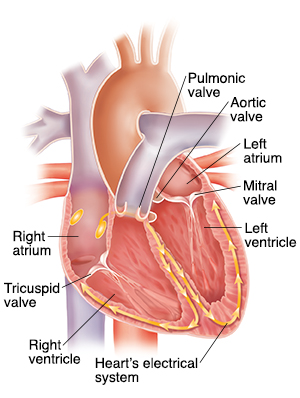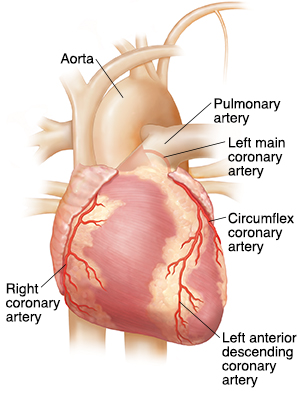How Your Heart Works
Your heart is a pumping muscle that works nonstop to keep your body supplied with oxygen-rich blood. Signals from the heart’s electrical system set the speed and pattern of the pump’s rhythm. The upper chambers (the left and right atria) beat first, followed by the lower chambers (the left and right ventricles). Valves keep the blood moving in one direction, through the heart’s four chambers.
Two major blood vessels carry blood away from the heart:
The aorta carries oxygen-rich blood from the left ventricle of the heart to the body.
The pulmonary artery carries oxygen-poor blood to the lungs.
The coronary arteries supply blood to the heart muscle. These are:
The left main coronary artery, which starts at the aorta and divides into two arteries:
The left anterior descending coronary artery
The circumflex coronary artery
Together, these left coronary arteries supply blood to the front and left side of the heart muscle.
The right coronary artery starts at the right side of the aorta and supplies blood to the bottom and back of the heart muscle.

The tricuspid valve prevents blood from returning to the right atrium.
The right ventricle pumps blood to the lungs through the pulmonic valve and into the lungs where the blood receives oxygen.
The pulmonic valve prevents blood returning to the right ventricle.
The left atrium receives oxygen-rich blood from the lungs and sends it through the mitral valve to the left ventricle.
The mitral valve prevents blood from returning to the left atrium.
The left ventricle pumps oxygen-rich blood through the aorta to the body.
The aortic valve prevents blood from returning to the left ventricle.
The heart's electrical system conducts the signals telling the heart when to beat.
